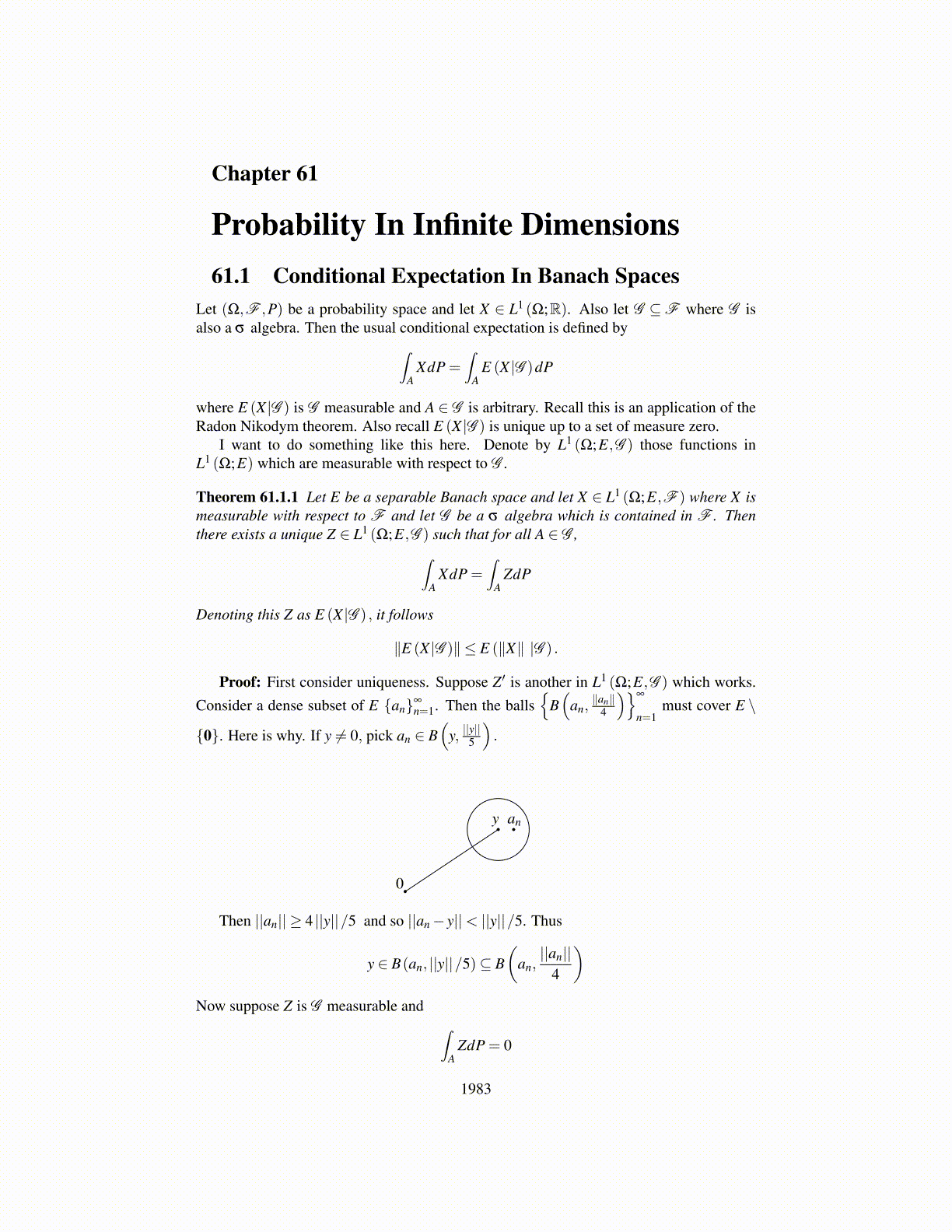
60.9. STRONG LAW OF LARGE NUMBERS 1983
For a small enough, P(Ea) ̸= 0. Then since Ea is a tail event for the independent ran-dom variables, {Xk} it follows from the Kolmogorov zero one law, Theorem 59.6.4, thatP(Ea) = 1. Let b ≡ sup{a : P(Ea) = 1}. The sets, Ea are decreasing as a increases. Let{an} be a strictly increasing sequence converging to b. Then
[X∞ ≥ b] = ∩n [X∞ ≥ an]
and so1 = P(Eb) = lim
n→∞P(Ean) .
On the other hand, if c > b, then P(Ec) < 1 and so P(Ec) = 0. Hence P([X = b]) = 1. Itremains to show b = m. This is easy because by the L1 convergence,
b =∫
Ω
X∞dP = limn→∞
∫Ω
Sn
ndP = lim
n→∞m = m.
This proves the theorem.